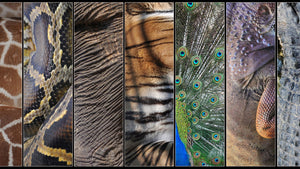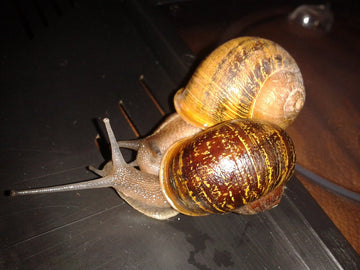Another Extraordinary Animal: Children's Books about the Animal Kingdom
Another Extraordinary Animal
Kids are natural born animal lovers! They devour information about the other creatures who inhabit our Earth with us. Often they read about a species, in general. But it's rare to find a great children's book about an individual animal. That's where you can dig into one life and learn about the animals in depth.
That's why our five-book series of children's nonfiction picture books are biographies of individual animals. To be included, it had to be a story about:
- an individual animal
- include an interesting story
- include interesting science
- a named animal, that is, one which has interacted with people so that someone named it
- scientist(s) who would cooperate with research and review the manuscript for accuracy
The series includes a bird, mammal, reptile, amphibian, and mammal. Next year, we'll add a marine mammal.
The Animal Kingdom
The animal kingdom with its many different animals has been studied by scientists for years. The tree of life splits into plants and animals, and the animal species are divided into six major classes, from the simplest to the most complex
- invertebrate, including insects and spiders
- fish
- amphibians
- reptiles
- birds
- mammals
Invertebrates are the most common species on earth, with some estimating up to 97% of the species. Included are insects, worms, arthropods, sponges, mollusks, octopuses, and more. They have no backbone or internal skeleton.
Fish are aquatic animals that breathe with gills. They can not survive outside water.
Amphibians are semi-aquatic. They need the moisture for their skin, and they lay eggs in water. This includes frogs, toads, salamanders, and caecilians (legless amphibians). Among the beastly kingdom, they are among the most endangered.
Reptiles once ruled as dinosaurs. Today reptiles include crocodiles and alligators; turtles and tortoises; snakes; and lizards. Cold-blooded, they need constant exposure to sunlight.
Birds are warm-blooded, have feathers, and are adaptable to most environments. While we think of birds as flying animals, there are some birds who can't fly such as the kiwi and the penguin.
Mammals are the most complex class of animals. They are warm-blooded, bear live young, and have body hair. Human beings are mammals. So are blue whales (and all whales and porpoises).
Biographies of Individual Animals
Children's picture books about animals are popular, with predators being a favorite. I didn't set out to write about the animal kingdom, it happened accidentally. Because this series is about one individual animal, it's extremely hard to find fish and invertebrates. I was lucky that the US space program had sent a spider into space for the invertebrate category. But I haven't found a named fish with a good story. (Sharks, I keep looking at you!)
(CLICK ON THE COVERS FOR MORE INFORMATION ABOUT EACH BOOK.)
BIRD - The Oldest Bird in the World
After the 2011 tsunami that struck off the coast of Japan, I heard about the oldest known wild bird in the world, Wisdom, a Laysan albatross who lived on Midway Island. I talked to scientist on the island, researched the bird, and wrote a story. Within six weeks after the tsunami, the story was written. When Kitty Harvill agreed to illustrate the book, it published in time for the one year anniversary of the tsunami.
MAMMAL - An Orphan Cub
Kitty Harvill heard about an orphaned puma cub, and sent me information. I was fascinated because the story involved an important evolving area of study: conservation corridors. When I looked up the location of the incident on GoogleEarth, I was startled to see that the puma family lived within sight of skyscrapers, an urban area. How could wild creatures like this survive the urban environment?
SPIDER - A Spider Who Became an Astronaut
One day I heard an interview with astronaut, Suni Williams about the animal experiments on the International Space Station (ISS). I was surprised that one of William's favorite experiments was with a spider. She set the spider habitat near her work station and the spider watched her as she worked. When she moved to one side, the spider turned toward her, and followed her movements.
That radio interview sent me on a journey to find out more about this spider. I talked with the scientists who set up the experiment and designed her habitat. This story is incredibly fun. The habitat had to be lightweight, compact, and keep the spider alive for 100 days. Most spiders spin a web to catch prey. But jumping spiders actively hunt, jumping to catch fruit flies and other food. The experiment focused on one thing: could the spider adapt to the microgravity of the ISS and learn to jump in space? Nefertiti was a fascinating and surprising spider!
AMPHIBIAN - A World Record Jumper
I looked for a long time for an amphibian story! Where would I find a frog or toad or lizard that was named AND had an interesting story?
Then, I learned that Mark Twain's story, "The Celebrated Jumping Frog of Calaveras County" had long ago inspired a yearly frog jumping contest, the Frog Jubilee (TM).
Each year in May, frog jockeys gather up bullfrogs and test them to see how far they can jump. The contest is actually a triple-jump, the distance the bullfrog can travel in three leaps. This means frogs that jump this way once, and that way the second time, and back to the starting point on the third time, would lose! They needed to travel in a straight line to win. The frog jockeys tried to encourage the bullfrogs to jump away from the starting point.
This was a story with heart! Especially when I learned that the record holder was a female bullfrog who had held it for over three decades (34+ years)! I learned that female bullfrogs seldom jump in the contest? Why? Because it's held in the spring, May each year, when the bullfrogs are breeding. Frogs are ineligible if they have any eggs.
Rosie the Ribeter set the world-championship record in May 1986 at 21 feet 5 ¾ inches.
REPTILE - The Tortoise Who Save His Species
The series had developed nicely with a bird, mammal, spider, and amphibian. Obviously, it needed a reptile. Again, I searched for a long time before I found a reptile with an interesting story. But what a story!
On Espańola Island, the southernmost of the Galápagos Island chain, the tortoises were almost extinct. Scientists began a project of captive breeding with 2 males and 11 females. Then, amazingly, in the San Diego zoo, they found one more Espańola tortoise and brought him back to the islands. They called him Diego.
For 40 years, Diego fathered babies that were returned to the island. It's a story of long, hard work by scientists and volunteers. But eventually the species went from 14 individuals to over 2500. We did it! We saved a species.
Sometimes, humans get it right.
COMING - Pelorus Jack, the New Zealand Porpoise
I thought this series was complete with a bird, spider, mammal, amphibian, and reptile. But last year, I visited New Zealand and heard about an amazing porpoise. A porpoise is a marine mammal. So, if I wrote about it, it would be another mammal. However, I didn't have any marine animals at all. (See AQUARIUM for an octopus story!)
It's very hard to find a story about an individual fish that has a name and a story with drama and excitement. There are named sharks, but we know almost nothing about their life outside a few photos.
When I found a video, actual footage from about 1905, that showed Pelorus Jack leaping in the bow wave of a steamer ship, I was convinced. He had captured my imagination! Look for his story next year!








